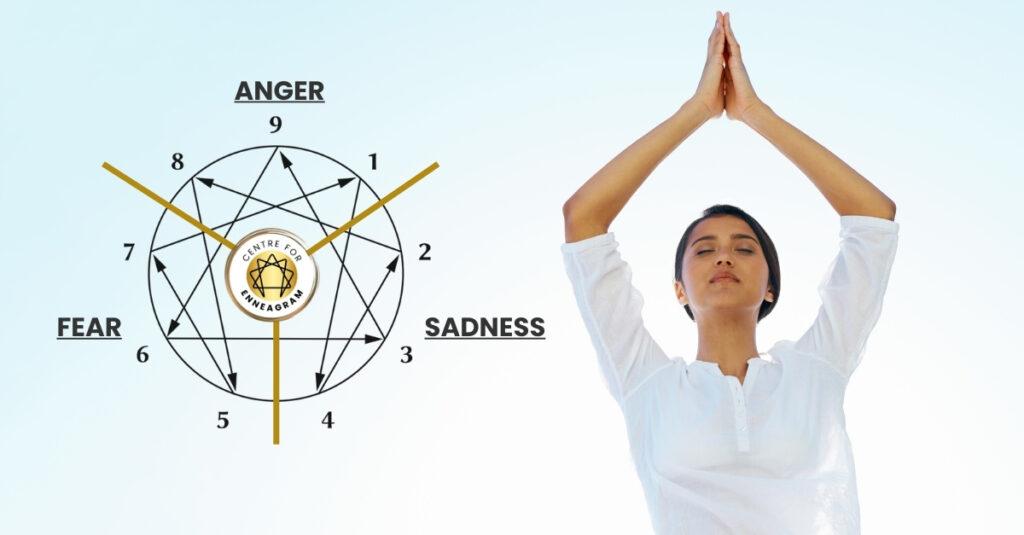
The 9 Enneagram types are rooted in the 3 Centres of Intelligence: the Head, Heart, and Body, and have great importance in the Enneagram. We have all 3 but may not always use them well. However, knowing our core type and dominant centre can be an important guide for personal growth. By understanding our type-based patterns of thinking, feeling and behaving, we can learn ways to engage the 3 centres in more productive ways.
First of all, self-awareness is key. Once we know who we are (and who we are not), we will have more precise insight on whether we overuse, underuse or misuse each centre. Then, we can work on activating specific centres to “turn up the volume” and gain greater access to all 3 centres.
The Head centre (5, 6, 7):
This centre is essentially about understanding and making mental sense of everything through information gathering and rational analysis. The core emotion is Fear but with 3 different ways of responding: Fives respond to their fear of depletion by withdrawing into analysis and information; Sixes project their fear by creating contingency plans to prepare for potential problems; Sevens move away from fear by focusing on future exciting possibilities. When overused, the pitfalls are overanalysing and dissociation from their heart/body, but productive uses are objectivity, insightfulness and functional compartmentalisation. To activate more of the Head centre, engage in cognitive-based activities like studying, doing puzzles, or even reading the news.
The Heart centre (2, 3, 4)
This centre is about the ability to sense the emotions of others and connect with them. The core emotion is Sadness, with 3 different ways of creating a positive image: Twos create an image of being likable, caring and helpful to affirm their self-worth; Threes project an image of success to seek respect and admiration for their achievements; Fours respond to their inner sense of lack by creating a unique and special image. When overused, they can be susceptible to emotional manipulation, masking or oversensitivity. However, when used productively, the Heart centre allows us to truly empathise and relate to others authentically. To boost this centre, spend more time doing things that activate your emotional side, like journaling to help access untapped feelings or having deep conversations with trusted friends.
The Body centre (8, 9, 1)
This centre is about movement, taking action/inaction, control of one’s environment, and experience through the 5 senses (sight, hearing, touch, sound, taste). The core emotion is Anger with 3 distinctly different responses: Eights have ready access to anger and release it like energy that needs to be expended; Nines avoid anger and focus on harmony; Ones cannot release or supress anger fully and it leaks out in repressed forms like resentment and irritation. When overused, Body types can be prone to impulsivity, passivity or reactivity; when used productively, they have gut knowing, can take effective action, and are grounded/steadfast. To connect more with your Body centre, engage in body-based practices that are rooted in the present moment, such as Pilates., Tai Chi or martial arts.
In conclusion, learning to activate the 3 Centres of Intelligence is a journey and one that requires self-awareness, courage and a willingness to cultivate and integrate the strengths of all 3 centres. Gurdjieff, one of the modern founders of the Enneagram, believed we should operate from all 3 to become “three-brained” humans. When any one centre is dominant, we fall out of balance and are therefore less complete. By consciously working to have greater access to all our centres, we can enhance our overall well-being, improve our relationships, and navigate life’s challenges with greater resilience and authenticity.
References:
- Lapid-Bogda, G (2015). Consulting with the Enneagram.
- Chestnut, B. & Paes, U. (Hosts), (2020, March 6), S1 Ep. 02 podcast. In Enneagram 2.0
